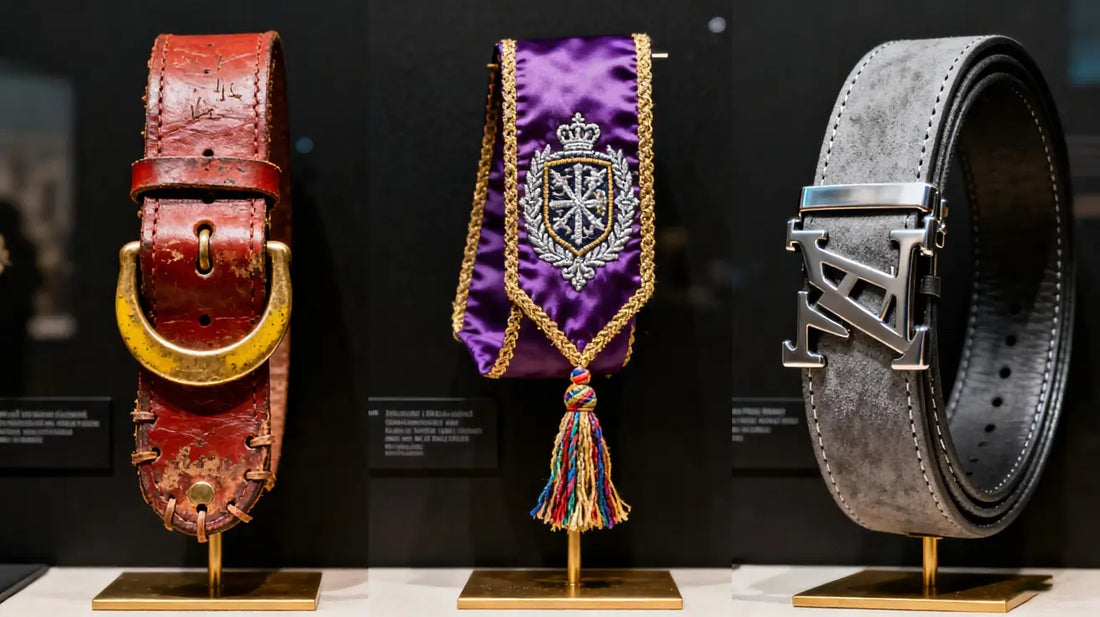
When Were Belts Invented? A Journey Through Fashion History
Share
Table of Contents
1.Introduction: The Origins of Belts
2.Early Beginnings: Belts in Ancient Civilizations
3.Belts in the Middle Ages
4.The Renaissance and the Rise of Fashion
5.Belts in the 19th and 20th Centuries
6.Modern Belts: From Utility to Statement Pieces
7.Cultural Significance of Belts Around the World
8.Common Misconceptions About Belt History
9.Conclusion
10.FAQs
Introduction: The Origins of Belts
When were belts invented? This simple question opens a fascinating journey through time. Belts may seem like a basic accessory today, but their story spans thousands of years, reflecting shifts in culture, technology, and fashion.
From the earliest leather straps used by ancient civilizations to modern luxury designs, belts have been more than just tools to hold up trousers — they’ve symbolized power, status, and style.
Early Beginnings: Belts in Ancient Civilizations
The earliest evidence of belts dates back to the Bronze Age (circa 3300–1200 BCE). Archaeologists have found belt-like accessories made of leather, fabric, and metal in burial sites.
Ancient Egyptians: Wore decorative sashes and girdles that resembled belts, often adorned with beads and jewels.
Greeks and Romans: Belts were widely used by soldiers to carry weapons and signify rank. Roman military belts, known as cingulum, were a symbol of authority.
China: Early dynasties used belt hooks made of jade or bronze, both functional and symbolic of social status.
Belts in these eras were both practical and ceremonial, often reflecting one’s role in society.
For more insights into ancient fashion and artifacts, visit the Metropolitan Museum of Art’s Costume Institute.
Belts in the Middle Ages
During the Middle Ages (5th–15th century), belts became a staple of European dress.
Men: Wore belts to secure tunics and carry pouches or swords.
Women: Favored decorative girdles, often embroidered or set with jewels, symbolizing wealth.
Knights and Nobility: Belts held weapons but also carried symbolic meaning — a knight’s belt was part of his honor.
Belts during this period were highly ornamental, showcasing craftsmanship and artistry.
The Renaissance and the Rise of Fashion
In the Renaissance (14th–17th century), belts became less about utility and more about style.
Wide belts and sashes were worn as fashionable accessories.
Artists and nobility often depicted belts in portraits as markers of sophistication.
Tailoring improvements meant trousers fit better, reducing reliance on belts for functionality.
Belts shifted towards being statements of taste and elegance rather than purely practical items.
Belts in the 19th and 20th Centuries
The 19th century marked a turning point. As trousers replaced breeches, suspenders were often used, making belts less common. But by the early 20th century, belts returned with force.
World War I & II: Military uniforms popularized leather belts with brass buckles.
1920s–1950s: Belts became essential for men’s trousers, symbolizing modernity.
Women’s Fashion: The cinched-waist look of the 1950s made belts central to feminine silhouettes.
Belts now carried dual roles: functionality and defining style.
Modern Belts: From Utility to Statement Pieces
Today, belts are indispensable in both men’s and women’s wardrobes.
Casual Belts: Everyday wear, from jeans to chinos.
Dress Belts: Slim, polished leather belts that complement formal suits.
Designer Belts: Fashion houses like Gucci, Hermès, and Louis Vuitton turned belts into luxury status symbols.
Innovations: Ratchet belts and reversible belts add modern functionality.
Cultural Significance of Belts Around the World
Belts are not only fashion items — they carry cultural and symbolic meanings:
Samurai Japan: The obi sash was integral to traditional dress.
Indigenous Cultures: Woven belts and sashes often symbolized identity and craftsmanship.
Western Cowboys: The Western belt and buckle became iconic in American culture.
Common Misconceptions About Belt History
Belts were invented for trousers: Not true. Belts predate trousers by millennia.
Suspenders came after belts: Suspenders actually dominated men’s fashion before belts became widespread.
Only men wore belts: Women also wore decorative belts and girdles as fashion statements.
Conclusion
So, when were belts invented? The answer stretches back over 3,000 years, from Bronze Age warriors to today’s fashion icons. What began as a utilitarian strap has transformed into one of the most versatile and symbolic accessories in human history.
Belts are more than just functional — they tell the story of culture, identity, and style evolution.
FAQs
1. Were belts used before pants existed?
Yes. Early belts secured tunics, robes, or armor long before trousers were common.
2. Who invented the modern belt?
There is no single inventor. Modern belts evolved from military uniforms in the 19th–20th centuries.
3. When did belts become part of men’s suits?
Belts became standard for men’s suits in the early 20th century, replacing suspenders for many.
4. Why did suspenders decline in popularity?
Suspenders were gradually replaced as trousers with belt loops became mainstream in the 1920s.
5. Are belts still practical today, or just fashion?
Both. They remain practical for fit but also serve as key fashion statements.
Belts have traveled through centuries of history to become the essential accessory we know today. Explore our curated collections of men’s belts and women’s belts to discover timeless styles for your wardrobe.
